If you are looking for a vegan friendly, sustainable textile, you might want to consider fabric made with corn waste. So what is corn fiber and what is fabric made with corn? Or for that matter, what is corn leather? What is the environmental impact of corn production? You might be very familiar with eating corn on the cob, but what about wearing corn fiber clothing?
Biotechnology has led to the advancement of bio-based products that are derived from natural renewable resources, rather than fossil fuels. It is improvising and producing green textiles that are sustainable and eco friendly.
Scientists and textile engineers are constantly looking to develop eco friendly new materials, that rely less on the limited resources of our planet. Fabric made with corn is one such new textile innovation.
This post contains affiliate links and I will be compensated if you make a purchase after clicking on my links, without any additional cost to you. It helps me to maintain this website and bring you more eco friendly and sustainable news.
What Is Corn Fiber?
Corn fiber is a fairly new textile innovation. It is a man made fiber, which is derived from annually renewable resources.  Fermentation of simple plant sugar, derived from corn, is used to create a range of textile products and applications.
Fermentation of simple plant sugar, derived from corn, is used to create a range of textile products and applications.
The fermentation process goes through a chemical transformation, but no petrochemicals are used. So it is not 100% natural, but man-made. The process is generally considered to be renewable.
Making corn fiber does not require petrochemicals. Fiber is derived from dextrose in corn, and used for the creation of the polymer in corn fabric. The polymer is formed into “pellets”, that can be used to make a wide range of products.
Corn fiber is a perfect replacement for synthetics and is used in corn fiber clothing and what is corn leather.
What Is Fabric Made With Corn?
Corn fabric conceptualizes the idea of using fermented plant sugars, derived from corn, to make a textile. The initial stage is making plant sugar from corn. Fiber that is used for fabric made with corn, is extracted from polylactide. (More about the production processes will follow below).
(More about the production processes will follow below).
Between 5% and 10% of corn goes to waste in silos at the end of each season. It is therefore a good substance to transform agricultural waste into a new material. Cargill Dow Polymers LLC developed corn fiber and it is also called Ingeo Fiber.
Nature Works make the ingeo polymer pellets, which is then sold to yarn and filament producers. Filament producers then supply it to customers or weaving companies.
It is available in both spun and thread forms. Thus, fine light fabrics, as well as stronger fabric can be made, and also non-woven textiles. It is used for knitwear, sportswear, footwear and outer garments. Textiles companies like working with corn fiber as prices are more stable than petroleum derived fibers.
Manufacturing Of Fabric Made With Corn
Corn is an agricultural product and is high in starch. Corn fiber is made using fermentation of simple plant sugar, derived from corn. You might be familiar with the use of corn fiber as a health supplement, 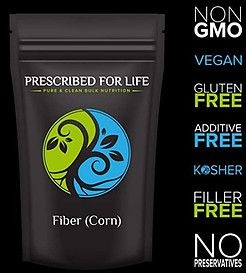 but it can also be made into corn fiber clothing.
but it can also be made into corn fiber clothing.
The starch is extracted from the plant fibers and broken down into sugars. Sugars are fermented and separated into polymers.
Corn fiber is composed of lactic acid. It is produced by converting starch into sugar and through fermentation, lactic acid is obtained.
- First step is to separate the starch from the biomass. Then extract the starch from the plant fibers and break it down into sugars. To make plant sugar from maize, the preferred process is wet milling. Starch is processed into dextrose and then through a fermentation process, is converted into lactic acid.
- Corn sugar is fermented and separated into polymers. The corn fibers at this stage are paste-like substances, which is similar to making simple yogurt.
- The residue that is obtained after fermentation of sugar, is then converted into polylactide, which is a high-performance polymer.
- Fiber that is used for fabric made with corn, is extracted from the polylactide.
- It is extruded into delicate strands which are cut, carded, combed and spun into yarn.
Apart from the chemical processes, the rest of the process is very similar to the processing of wool. At the moment most of the polylactic corn fiber is used for non-woven products, like diapers and wipes, carpet backing and horticultural products, rather than textiles for garments.
What Is Corn Fiber Used For?
Corn fiber is currently used in non-woven textiles, sports wear, knitwear, socks and outer garments. Outer garments made from corn fiber are more eco friendly than polyester and nylon.
Corn yarns are perfect for lightweight, summer garments. Texture is similar to cotton, but not as dense as cotton. Corn fiber can be made into yarn, fabric, non-woven products and what is corn leather. 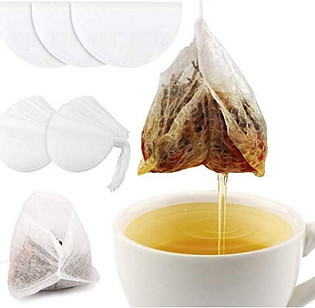
- Corn yarn and fabric is used for casual t-shirts, sports wear, trousers, next-to-skin essentials like underwear and home textiles. It is perfect for new fiberfill blends for thermal wadding that has unique natural insulation properties.
- Non-woven: it is already used in wipes and female hygiene products as two of the non-woven applications. It is well suited for use in diapers, or nappies, and cosmetics, because of the ability to be compostable in a commercial facility.
- As a mesh it is used for tea infuser bags.
- Industrial applications:
- geotextiles, agrotextiles, specialist filtration media. In the form of a biopolymer it can be used for packaging.
- in the construction industry: used for slope vegetation netting, curing sheets etc.
- food packaging: trays, fast food containers, dustbin liners.
- Medical field: gauge, bandages, absorbent cotton, non-woven fabric. Composite material is used as fix-up in bone joint.
Corn fiber is processed into pure corn yarn, but can also be blended with natural fibers like cotton, wool, silk and viscose, as well as synthetic fibers like polyester. The most common blend is 70% cotton with 30% corn fiber.
Corn fiber yarn is breathable and similar in appearance to cotton. It is more resilient than cotton and the knitted fabric is springier, which results in a fluid drape. Stains do not set as easily as with cotton. Could be easier on the hands when hand knitting with it.
What Is Corn Leather?
Corn leather is a vegan bio-sourced leather and is composed of 50% corn waste and 50% polyurethane. Depending on the brand, ratios could vary from 47% to 82% corn waste. It is made in an Italian factory. 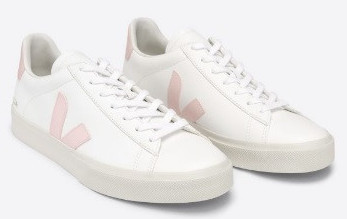
The plant based leather combines the qualities of animal leather, without the damaging and toxic processes of tanning and preserving animal skins.
Eco leather base material consists of more than 50% Bio plant material, which comes from renewable sources and is carbon neutral. Production has a substantially lower impact on the environment than synthetic polyurethane leather.
Corn leather is moderately sustainable and is durable if cared for. It is sustainably made from corn waste and is up to 63% biodegradable.
Making corn leather material does reduce the amount of corn waste that is left over from the food industry. Therefore, it can help to reduce the environmental impact of corn production.
It feels very similar to animal leather in terms of elasticity and touch, and is actually tougher than animal leather. Can be cleaned by simply wiping it with soap and water.
Corn Bioskin is a bio-based leather alternative with a 60% bio based content obtained from maize processing waste
What Is Corn Leather Used For?
Corn eco leather, also called bioskin, is used to produce sneakers with Veja and ACBC the two main brands using the vegan leather.
Veja, the French footwear brand that is known for its sustainable footwear and apparel, is offering a variety of vegan sneakers, with the latest vegan leather material being derived from corn. 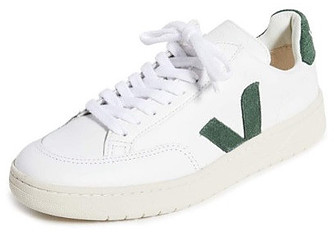 The corn leather material is a waxed canvas, which is coated with a resin from the corn waste industry.
The corn leather material is a waxed canvas, which is coated with a resin from the corn waste industry.
Corn waste leather is an innovative vegan leather alternative which is a coated canvas made from 50% corn waste and polyurethane. The corn leather material is used in a shoe line called Campo and looks and feels similar to normal leather. Corn waste leather is biodegradable.
Veja is also discussed in this post: Eco-conscious shoes: top footwear brands made of recycled plastic.
ACBC is using Corn eco-leather (Bioskin) to make a sneaker. The unisex BioMilan corn shoe is made with corn agricultural waste product. It is perfect for combining being green and fashionable.
- Upper: corn eco-leather (Bioskin)
- Insole: recycled foam is used for the recycled insoles, with 30% corn waste
- Lining is produced with Rebotilia, made with recycled bottles
- Foam sole: EVA foam sole adapts to the physiognomy of the foot.
Read more about ACBC (Anything Can Be Changed) in this post: Eco shoe brands: sneakers with a green soul.
Materials are made to last for a long time and the shoes are suitable for different occasions.
Properties Of Corn Fiber Clothing
Corn fiber is a perfect replacement for synthetic fibers. It comes entirely from corn, is fully eco-compatible and it has the appearance and feel of natural fibers. Corn fiber is available in both spun and thread form, so it can be turned into a fine light fabric, or a strong fabric.
- Fabric made with corn is soft and anti-bacterial, making it ideal for active wear.
- Corn fibers are available in both spun and filament forms in a wide range of thread count.
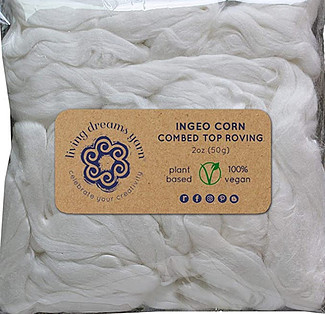 From micro-denier for fine and light-weight fabrics, to high counts for more robust applications.
From micro-denier for fine and light-weight fabrics, to high counts for more robust applications. - Hypoallergenic for those with sensitive skin.
- Anti-wrinkle makes it perfect for traveling wear.
- No chemical additives or surface treatments.
- Corn fiber filaments have a fluid drape and subtle luster.
- Removal of dirt and stains are easy.
- Corn fiber balances strength and resilience with softness, drape and comfort in textiles.
- It provides excellent moisture management.
- It is easy to wear, has a perfect drape and provides gentle comfort.
- Corn fabric has better UV resistance and color retention than synthetics.
- High melting point and high crystallization degree with good clarity.
- Fabric combats sweat and has low odor retention, thus giving the wearer confidence and comfort. It has performance benefits for yoga and sports wear.
- It is optically active and is both a hydroxyl group and carboxylic acid group
- Dries quickly and retains its good appearance even after numerous washes.
- Corn fiber used in outerwear offers a more environmentally friendly alternative to synthetics. It can be used in padded and quilted garments.
Benefits Of Fabric Made With Corn
Corn fiber clothing has the appearance and feel of natural fibers. Advantages include:
- It is derived from natural plant sugars, thus products can be decomposed at the end of their lives. On the other hand, petroleum based products must be physically or thermally recycled, or they end up in landfill.
- Lactic acid can be made from biomass.
- It is naturally flame retardant.
- Compostable at the end of its useful life.
- Corn fiber fabric is easier to maintain than several other fabrics and can be washed and dried using standard procedures and equipment.
- Easy care with normal machine washing and dry cleaning. Corn fiber clothing is easy to care for and comfortable to wear.
- Better at retaining strength, color and properties over a period, than synthetics.
- Stain resistant and better than synthetics in UV resistance.
- More breathable than polyester.
- Requires less fuel for production, thus often regarded as environmentally friendly. Less greenhouse gasses are produced.
- Fiber has a high strength, thus has a very broad use.
- Characteristic of lustrous silk with a beautiful drape.
- Conventional machinery can be used through all the production stages of yarns, fabrics and garments.
Environmental Impact of Corn Production
Growing corn leaves a very large environmental footprint. This is because of the use of genetically modified seeds, pesticides, water use and land hogging. However, it uses half the amount of energy that is required to produce cotton, or even organic cotton. 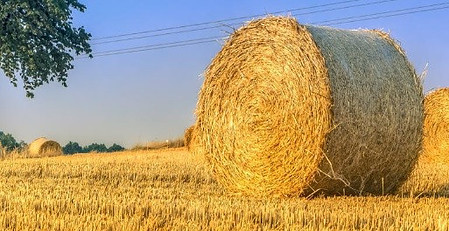
More than 90% of corn crops that are grown in the USA, use genetically modified (GMO) seeds. Corn production is associated with mono cropping, which causes the soil quality to be so poor, that farmers have to use chemical fertilizers. Pesticides and fertilizers contaminate the water and ecosystems.
Mono cropping is not an issue when the corn is organically grown. So make sure to buy organic, non-GMO corn. Corn fiber is vegan, but if corn production is not organic, then the use of chemicals are harmful to wildlife and ecosystems.
Fabric made with corn has a reduced environmental impact compared with petroleum based synthetic textiles. Corn is a clean product and at the end of its life cycle, it is completely biodegradable, compostable, recyclable and can be burnt without producing dangerous fumes. It will break down at high temperatures (above 180 degrees Fahrenheit) and high humidity (95%), such as in municipal composting facilities.
You can dispose of corn fiber clothing with zero environmental impact at the end of its useful life.
There is still a debate as to how eco friendly corn fabric is, mainly because of the environmental impact of corn production. The main corn producing countries are USA, China, European Union, Brazil, Mexico, India and Argentina.
Negative Aspects of Corn Fiber Fabric
The main disadvantage of what is fabric made with corn, is that the fermentation process involves a chemical transformation. So it is not 100% natural. The transformation is regarded as renewable as no fossil fuels are involved in the process.
Traditionally grown corn leaves a very large environmental footprint. This is due to the usage of pesticides, land hogging and the amount of water used. Energy however, is almost half of that required for cotton and even organic cotton.
What is corn leather, is still made with polyurethane, which is made from petrochemicals and not sustainable. So leather from corn fibers might be vegan, but still uses oil derived synthetics.
Caring For Corn Fiber Clothing
- Wash in cold water with mild detergent.
- Dries quickly as almost gets spin dried in the machine
- Does not need ironing as it is wrinkle free, making it perfect for traveling
Uses of corn starch plastic and polylactic acid is discussed in this post: What is corn starch plastic?
Final Thoughts On What Is Fabric Made With Corn
What is corn fiber is man made and derived from annually renewable resources. To make it on an industrial scale, will center around the fermentation, distillation and polymerization of the maize dextrose.
As fabrics in 100% corn fiber and corn fiber blends are being developed, the technical knowledge on spinning, dyeing and finishing is expanded.
Under the correct conditions and with the right handling, it is compostable and can be chemically recycled, making it a closed loop of production, consumption, disposal and re-use. This way the environmental impact of corn production can be reduced.
If you have any experience or questions about what is corn fiber or what is fabric made with corn, then please leave your comments below, and I will get back to you.
,

Hi Lin. I am curious to know if this product can be blended with other fabrics as I am interested in using it for clothing items. Thanks for your help!
Corn fibers can indeed be blended with other fibers to make clothing items. Personally I would stick to using natural fibers. I hope it helps, Liné
Given that my daughter has a serious reaction to all corn products and corn derivatives, this is horrible news. We couldn’t figure out why wearing certain clothing irritates her skin so much. I’m going to guess that it has corn in it.
I am not familiar with your daughter’s health and allergy history, but as very few fabrics actually incorporate corn, you should also look at chemicals used in the production of fabrics and textiles. All the best.
I have 13 IgE food allergies, including corn. I react to corn as well as corn derived products like toothpaste, shampoo, cleaners, and fabrics. It is a nightmare to avoid corn and products derived from corn in the United States. Finding 100% cotton clothes with 100% cotton threads is almost impossible. The rising popularity in corn products just spells more headaches for those of us allergic to corn.
I am sorry to hear about your corn allergies. There are several posts on the site where organic cotton is discussed, so I suggest you look at some of them for organic cotton clothing.
Organic cotton underwear is available from Organic Basics.
Nudie Jeans do 100% organic cotton jeans.
Made Of does organic cotton baby and skin care products.
Thought makes a full range of clothing using organic cotton.
I hope this helps, but please let me know if I can provide more options.
All the best, Liné
You just made me see the beauty in agriculture once again. There is absolutely no waste in agriculture, every component has value and top of it is the safety of agricultural product. The fact that corn fiber can go through a fermentation process and be process to textile is great. Thank you for this eye opener
It is indeed amazing that agricultural waste can be used to produce sustainable products.
Wow fabric made from corn? I never knew that! Sometimes the internet can be a really useful teacher!
Reading through this post I can clearly see the pros and cons of this type of process. The growing corn does seem a lot cheaper than cotton, there is other environmental factors like you have stated. It’s good I read through this otherwise I wouldn’t have thought about the cons. It seemed like a environmental friendly option!
Although there is still a debate about the environmental impact of corn production, it is great that corn waste is used to produce fabric made with corn. I found it interesting to discover what is corn leather and what is fabric made with corn.
I have heard about cactus leather and leather made of pineapple and other plant-based ingredients, but I hadn’t heard yet of leather made by corn, or any other fabric made by corn. It makes sense, because corn is used for so many products, why not use its waste? I love this idea. It’s great how versatile this is, and it is even used for tea bags. Do all tea brands use corn fabric? Do a lot of clothes brands also use corn or is that still in the beginning stages? And no ironing is needed, that’s a big winner with me, because I hate ironing, in fact I don’t iron clothes, I always buy clothes that do not need ironing 😉
This text was super interesting. I would love to find out more about companies that use corn fabric.
Indeed, cactus leather is called Desserto and pineapple leather is Pinatex, so what is corn leather, is great to find, as well as corn fiber clothing.
The tea bags mentioned in the post, is used for tea infuser bags, and are for loose leave tea, So you buy the tea bags separately, rather than the tea brands using what is corn fiber in their teabags. I hope that helps.
My favourite part about this is that it is recyclable material when done correctly. In a world where only 12% of clothing used is actually recycled Corn Fabric is something that is needed. I would certainly consider paying more for clothing if I knew it was made out of this stuff, it’ll make me feel good inside, I think, knowing I am helping to do my bit in saving the world.
I agree with you that one does feel good when you know you are helping the planet, as well as being kind to your body.
An innovative idea. I very much enjoyed reading about corn-based products. Before reading your article I had no idea that there was even any way to do this. As far as being able to be beneficial in helping you with ideas in the product area I can’t give you that type of feedback. I do think your website is well put together and everything that is necessary to know is immediately available and I like that I don’t have to go digging around for an answer. As far as my opinion on this topic I think it is a very cool product. There’s certainly nothing misleading about your information and you’re very clear about the negative impacts. As I said I like the way you set up your website. I did learn a great deal here especially about nonallergenic fiber as I too have a lot of friends that have skin conditions that no one seems to be able to cure. Perhaps your products or just the thing.
Thank you for your kind comments. Organic products and natural fibers are much better for your skin, than the harsh chemicals that are used in the production of synthetic fibers. So I suggest you look for organic clothing and products. I hope it helps.
I have been reading how much energy is consumed in the production of cotton. So exploring less energy expensive alternatives is natural. I really think corn is a good replacement. The energy consumption is still high. But it’s no way near to cotton. And the brands that work with corn are cool!
Producing fabric made with corn does require less energy than producing conventional cotton. Although there are still questions about the environmental impact of corn production, it is good that corn waste can be used to produce what is corn fiber, and then to make corn fiber clothing.
Hi Line, I’m pleased to meet you.
This is a very interesting and educative post. I’m thrilled to know that corn fabric conceptualizes the idea of using fermented plant sugars, derived from corn, to make a textile, like you outlined. This is really amazing. I have really learned a lot from this fascinating post.
It’s well presented and organized, thanks for sharing.
Hi there, It is good to hear that you have learnt what is corn leather and what is fabric made with corn. All the best.
This is very informative article and I have just learnt somthing new. I never knew clothes and sneakers could be made from corn and the best part is that it is eco friendly. The fact bigs brands like Veja and ACBC uses corn leather will really excite my wife and daughter who are both big on saving the enviroment and are all for using eco friendly stuff. I will definately be sharing this article with them.
Thank you for this great article.
Regards
Lawrence
Hi Lawrence, it is great to discover what is corn leather, is used by eco friendly shoe brands like Veja and ACBC. I hope your wife and daughter enjoy exploring what is fabric made with corn. All the best, Liné
I’ve known fuel made from corn, watched a news item on it a few years back. However, corn fabric is new to me! Reading it for the first time here. Interesting what innovation has brought in recent years. The world will be a much better and cleaner place if this was able to replace plastic packaging.
Corn is being used for fuel, as well as animal fodder. To see that the corn waste is used for a plastic alternative and to make what is corn leather, is a great innovation.
This bioskin is really interesting. The thought of leather that is not really a leather made me stop and think. I’ve never heard of these processes before, and they ave to be better for the environment. Why don’t we use them more often? You’d think with all the people crying out about saving our planet this would be a sustainable more well known avenue that is becoming the norm.
I’d love to learn more about this and think it would be great to start seeing these products in the stress over the products that are known to damage the world, endanger species, and end up in the landfill for centuries.
Although there are still issues around the environmental impact of corn production, being able to produce fabric made with corn, does reduce the amount of waste. One would hope that the production of corn fiber clothing would increase.